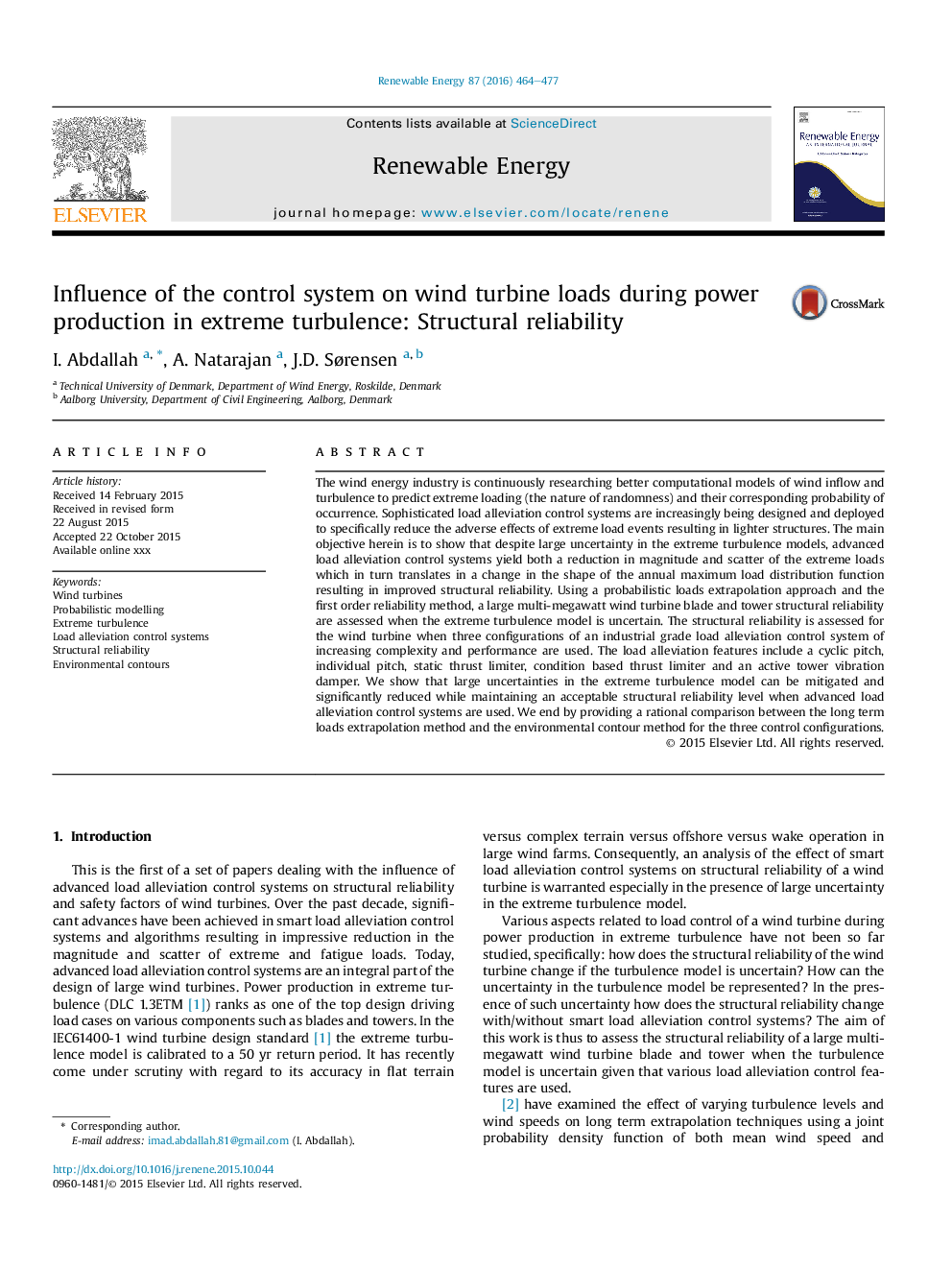| Article ID | Journal | Published Year | Pages | File Type |
|---|---|---|---|---|
| 10293988 | Renewable Energy | 2016 | 14 Pages |
Abstract
The wind energy industry is continuously researching better computational models of wind inflow and turbulence to predict extreme loading (the nature of randomness) and their corresponding probability of occurrence. Sophisticated load alleviation control systems are increasingly being designed and deployed to specifically reduce the adverse effects of extreme load events resulting in lighter structures. The main objective herein is to show that despite large uncertainty in the extreme turbulence models, advanced load alleviation control systems yield both a reduction in magnitude and scatter of the extreme loads which in turn translates in a change in the shape of the annual maximum load distribution function resulting in improved structural reliability. Using a probabilistic loads extrapolation approach and the first order reliability method, a large multi-megawatt wind turbine blade and tower structural reliability are assessed when the extreme turbulence model is uncertain. The structural reliability is assessed for the wind turbine when three configurations of an industrial grade load alleviation control system of increasing complexity and performance are used. The load alleviation features include a cyclic pitch, individual pitch, static thrust limiter, condition based thrust limiter and an active tower vibration damper. We show that large uncertainties in the extreme turbulence model can be mitigated and significantly reduced while maintaining an acceptable structural reliability level when advanced load alleviation control systems are used. We end by providing a rational comparison between the long term loads extrapolation method and the environmental contour method for the three control configurations.
Related Topics
Physical Sciences and Engineering
Energy
Renewable Energy, Sustainability and the Environment
Authors
I. Abdallah, A. Natarajan, J.D. Sørensen,
